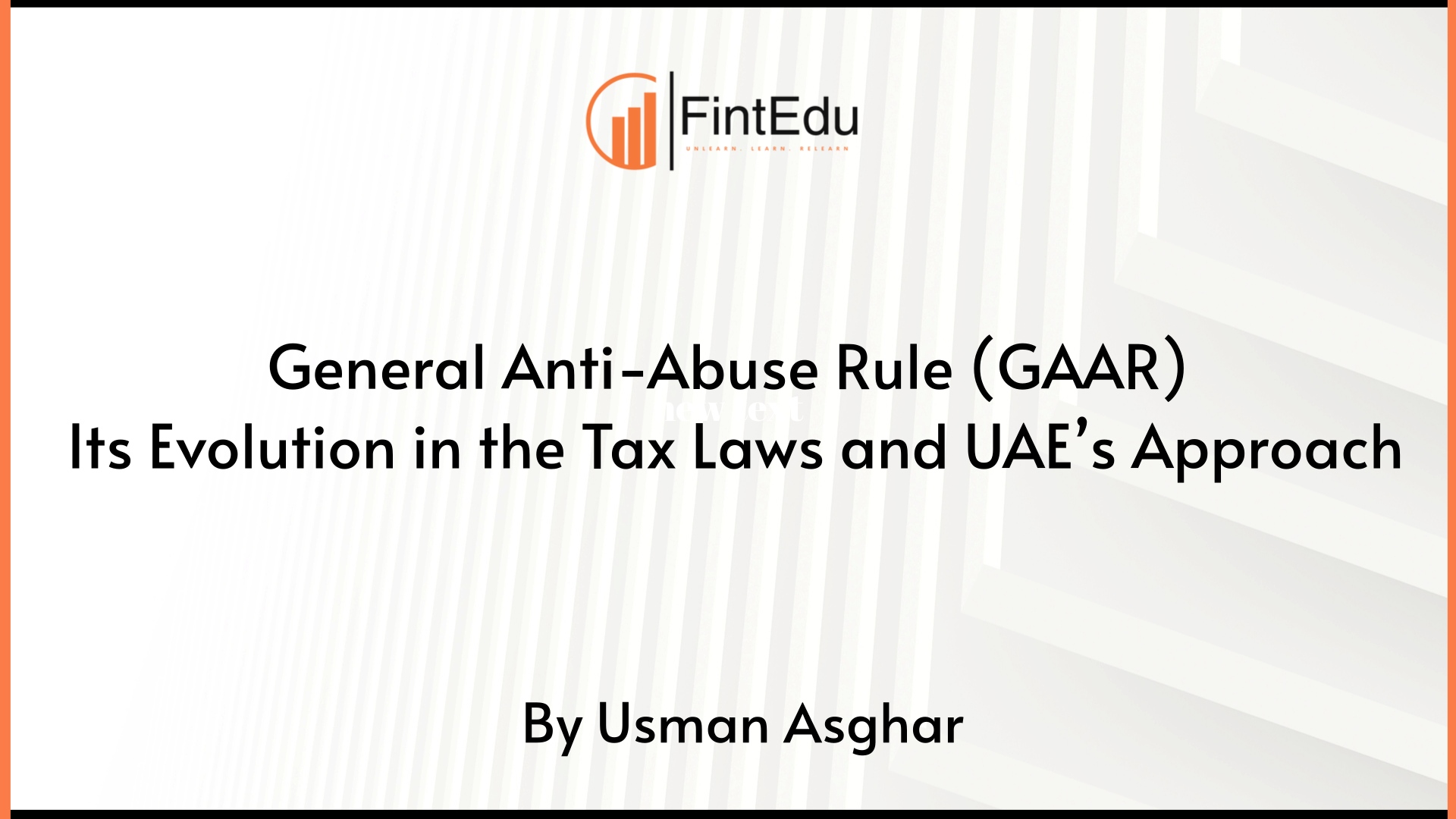LISTEN TO THIS ARTICLE
GAAR is a set of rules in a country’s tax legislation that aims to eliminate unacceptable tax evasion practices. This is done essentially by giving that country’s tax authority the power to deny a particular tax benefit that would lead to tax avoidance or to increase the tax liability against the taxpayer. GAAR focuses on any aspect of a transaction that is contrived and undermines the tax law in an effort to obtain an undue tax benefit. These rules are the power that the tax administration applies the tax regulations to the substance of the business, leaving aside the inappropriate forms used by taxpayers through which they have obtained an undue tax advantage.
One of the key challenges with GAAR is its interpretation ie. what is considered to be tax avoidance can be interpreted and defined differently by different people. This can make it difficult to distinguish between transactions that are, or are not, falling under GAAR. The avoidance is configured through the consummation of the objective element (taxable event of an economic nature) and the subjective element (the intention).
Denominations
GAAR doctrine has received many names according to its variants applied in different countries.
This is how it can be mentioned:
the principle of economic reality, of economic interpretation, substance over form, the reason for business, the principle of profit, legitimate nature of the business, doctrine of economic substance, simulation, of multiple acts, fraud of the law, abuse of legal forms, abuse of the law, theory of the new realism, theory of valid economic motives, etc.
Internationally, GAAR generally covers abusive maneuvers, and it is distinguished from the Specific Anti-Avoidance Rule (#SAAR) insofar as these apply to a specific status of a specific tax.
Initial Creation
In 1919, the German Tax Law created GAAR by establishing:
“In the interpretation of tax laws, their purpose, their economic significance and the development of circumstances must be taken into account.” It was then implemented by France in 1941 followed by Spain in 1963 and Italy in 1990.
This normative tide continued to become internationalized and reached the beaches of South Africa in 2006, China in 2008, Indonesia in 2008, and India in 2016.
Legal Philosophy
In the case of “Dalloz Sirey” (1867), the French Court of Cassation made it possible for the tax administration to review transactions to discover the true nature of a contractual agreement.
The United States in the case “Higgins vs. Smith” (1940), developed the anti-abuse doctrine of #"substance over form" as if the business was fictitious, the administration could dispense with it in order to apply the true purpose of the tax rules.
The principle of business reason (#business purpose test) was adopted in the case “Gregory vs. Helverin” (1940) and that of complex operations or multiple transactions (“step transactions”).
This doctrine was then extended to the United Kingdom namely #New Realism in the 1980s and was applied in the case “Ramsay” (1982). The Netherlands Supreme Court applied it in 1984 calling it #Fraus Legis (#fraud on the law). The European Union Court of Justice in the case “Halifax” (2006) considered abuse of the law as an artificial construction that has essential objective to avoid taxes, and in the case “Cadbury-Schweppes” (2006), applied the so-called #theory of valid economic motives.
New Naming
In the USA in 2010, the #economic substance doctrine was introduced in the Internal Revenue Code, which was a milestone due to the long tradition of jurisprudence. This was followed by the UK when it introduced GAAR in the 2013 Finance Act which was aimed at abusive tax planning that seeks to obtain tax advantages through an “unreasonable act”.
In 2015, the OECD - OCDE proposed its implementation in the #BEPS Framework as did the European Union in 2016. The project was called the Anti-tax Avoidance Directive (#ATAD).
Legal Certainty
The application of GAAR has in practice entailed a high level of litigation with the clear damage both for the actions of the tax administration and for business planning by the taxpayers. This lack of legal certainty could be resolved if the anti-abuse norms included the minimum essential elements that are generally controversial in the courts due to the grey or empty areas of the laws. These mainly include:
- The acts involved.
- The inclusion of multiple transactions.
- The definition of tax benefit.
- The purpose or intention.
- The economic reality.
- The determination of the tax consequences.
- Special procedure to determine abuse or circumvention with objective criteria.
Synthesis
The evolution of the GAAR has been permanent in the jurisprudence and as reformed by different countries will undoubtedly continue that way, considering the latest international events. Experience indicates that the greater the regulatory precision, the lower the litigation, and the greater the legal certainty in this essential issue of tax law.
UAE’s Approach
The United Arab Emirates promulgated the Corporate Tax (CT) effective June 2023 and in consequence issued the Federal Decree Law No. 47 of 2022 on the Taxation of Corporations and Businesses (CT Law) which lays down the legislative criteria for implementation of the Federal CT and includes the provisions not only on GAAR but also on Special Anti-Abuse Rules (Article 50).
GAAR can reasonably be invoked on determination of the following facts:
a) A transaction or an arrangement or any part thereof is entered into or carried out without a valid commercial and/or non-fiscal reason reflecting the economic reality; and
b) The main purpose or one of the main purposes is to obtain the Corporate Tax advantage that deviates from the CT Law.
Apparently, GAAR can also be applied when a person enters into a transaction or arrangement with the purpose to benefit another person. A CT advantage includes, but is not limited to the following:
- CT refund claim.
- Avoidance or reduction of CT payment obligation.
- Deferment of CT payment or advancement of CT refund.
- Avoidance of an obligation to deduct or failure to account for CT.
The actions that can be taken by the Federal Tax Authority upon invocation of GAAR can include:
- allowing or disallowing an exemption, deduction, or relief in working out taxable income or the CT liability, including its allocation to another person; or
- re-characterization of a payment or income; or
- disregarding the effect for the purposes of the CT Law that would otherwise arise from the application of other provisions of the CT Law.
Disclaimer: Content posted is for informational and knowledge sharing purposes only, and is not intended to be a substitute for professional advice related to tax, finance or accounting. The view/interpretation of the publisher is based on the available Law, guidelines and information. Each reader should take due professional care before you act after reading the contents of that article/post. No warranty whatsoever is made that any of the articles are accurate and is not intended to provide, and should not be relied on for tax or accounting advice
Contributor
Related Posts

@@PLUGINFILE@@/Permanent%20establishments%20and%20technology%20%E2%80%93%20an%20evolving%20iss...
Read More